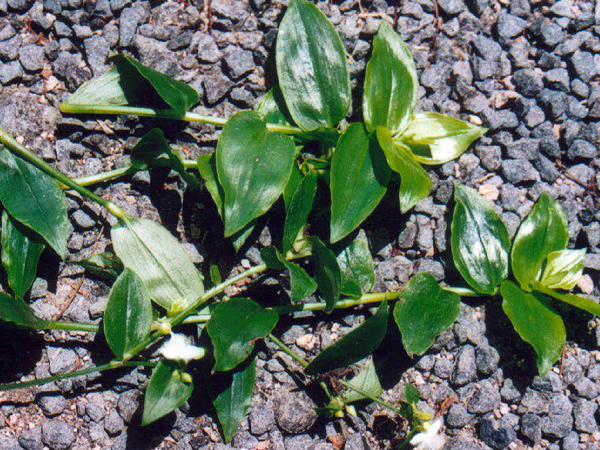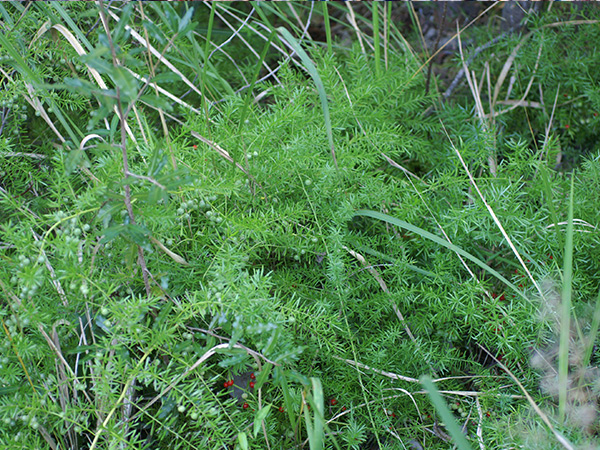Weeds

Weeds Identification
Identification
The Gallery below shows some of the most common weeds on the Northern Beaches. For more detail and images please look under their name on this site or search on NSW Weedwise
What are weeds?
There are over 1600 plant species that have been identified as weeds in New South Wales. A weed is a plant growing where it is not wanted. Weeds can move into ecosystems where they have not previously existed and typically grow and reproduce rapidly. Weeds are invasive plants and are most often introduced species.
Weeds can thrive and persist in many different environments from urban and rural areas to deserts, bushland, alpine, coastal and ocean habitats.
Why are weeds a problem?
Weeds pose a serious threat to our environment and farming industries. They can harm native plants and animals, natural landscapes, water catchments and agriculture and can impact the economy, human health and recreational activities.
Environmental weeds threaten the biodiversity of our native plants and animals by:
- reducing the diversity and abundance of native species
- upsetting the balance of natural ecosystems
Weeds compete with native plant species for nutrients, water, sunlight and space. They can form dense areas of vegetation that shade and smother native species and may alter key environmental events such as the frequency of fire. This can threaten both native plants and the animals that rely on them for food and shelter.
Weed infestations can also reduce the aesthetic appeal of our natural environment for public recreation and appreciation and impact production land where they may reduce agricultural output.
Invasive species threaten biodiversity in NSW national parks. In NSW, weeds and pest animals have been identified as the next biggest threat to Australian native plants and Australian animals after land clearing
Weeds are a major threat to our unique natural environment, threatening the survival of hundreds of native plants and animals in NSW alone. They also impact on the price of food, human health through allergies and asthma, recreational activities and the NSW economy.
How do I know if a garden plant is weedy?
Some plants can be weedy in some areas and not others. There are many common garden plants that fit this description (e.g. morning glory and agapanthus). For example a harmless garden plant from inland NSW may become weedy if grown in a garden on the coast. Therefore, care must be taken when bringing plants home to your garden from other areas.
Don’t be fooled into thinking that native plants are always a safe option. They can also become weeds when they are grown in areas out of their original environment. A classic example of this is the Cootamundra wattle (Acacia baileyana) which has proven invasive outside of its natural region.
Even popular edible species of plants that are often grown in gardens like olives and passionfruit have become weeds in some areas. They need to be carefully managed to reduce the risk of becoming a weed problem elsewhere.
Generally, a plant has the ability to become weedy if they have any of the following traits:
- The ability to spread by vegetative means (e.g. bulbs, roots or stem fragments)
- Produce berries that can be eaten by birds (e.g. olives, camphor laurel)
- Produce large amounts of seeds
- The ability to survive under extreme conditions
- A history of weediness in similar climates.
You can check what weeds are in your area and how they need to be managed using NSW WeedWise or you can ask an expert for advice.
Further information on weedy garden plants and a tool to help you identify a range of weeds can be found at Weeds in Australia.
Follow the steps below to help stop the spread of weeds into the environment:
1. Choose garden plants carefully and avoid plants that can be weedy in your area
There are many weedy plants that look great in your garden but can pose a serious threat to food production, the survival of native plants and animals, our waterways and our health.
Before choosing plants for your garden make sure you find out which plants are weedy in your local area by asking an expert.
The Nurseries & Garden Industry has developed the Grow Me Instead program to assist gardeners in choosing alternatives to weedy plants for their area. The booklets list common invasive garden plants for a region and a range of more suitable alternatives that are non-threatening to the environment.
For more information on the Grow Me Instead program talk to your local accredited nursery.
2. Make your garden a ‘weed’ free zone
Two thirds of Australia’s weeds are escaped garden plants and the number is growing.
Common garden plants such as privet, bridal creeper and pampas grass are extremely weedy and can cause significant damage to our natural environment.
Here are some suggestions that can assist you to check your garden for weeds:
- Make your garden a ‘weed free zone’. Check you don’t have any of the plants included in the weed list that may be a problem in your area.
- Contact your local council for a list of common garden escapees in your area and remove them from your garden.
- Learn to recognise, or have identified at your local garden retailer, any plant you suspect is invasive and remove it from your garden.
- Monitor your garden to ensure that plants are not spreading and posing a threat to nearby bushland or pastures.
3. Manage your plants so they don’t jump the fence
Even when you have removed weeds, it is important to regularly monitor your garden to ensure weeds do not re-establish.
Some steps you can take to maintain a weed-free garden include:
- Regularly monitor weeded areas.
- Remove old flower heads, collect and remove fruit and berries and control runners and vines.
- Apply dense mulch such as sugar cane. This will reduce the chances of a weed re-establishing.
- Replant weeded areas with desired plants and provide nutrients to encourage active growth.
- Buy weed-free soil, mulches and fertilisers, including manure and be prepared to manage any weeds that establish from these sources.
- Be careful using weeds in your mulch as weed seeds can survive the mulching process. Fine mulching offers the best opportunity of eliminating weeds.
- Remove waterweeds from your garden pond. Visiting birds can move weeds from your pond into local waterways.
- Dispose of your garden waste appropriately (see section below).
4. Never dump garden waste in the bush, vacant land or on roadsides
Poor disposal of garden waste is one of the main ways that weeds escape from gardens and start growing in bushland and waterways. Some of the ways that you can help minimise the spread of weeds through responsible disposal of garden waste include:
- Never dump garden waste in bushland, vacant land or on roadsides.
- Dispose of weeds that are already seeding or are able to reproduce vegetatively through suckers and bulbs by placing them in a black plastic bag, sealing it and ‘baking it’ in the sun until destroyed. This method alone may not kill all parts of the weed, for example bulbs, and may need to be used in combination with other methods such as mulching. If unsure, contact an expert for advice.
- Compost or dispose of garden and green waste in council green waste collections or by carefully transporting it to your council’s green waste tip. Check with your local council about what garden waste disposal facilities are available in your area.
- Always cover trailers when transporting plant material to prevent seeds and other live plant material falling off.
- Never dump aquarium water or contents down drains or into waterways.
- Report any weed infested vacant blocks to your local council.
Sources: NSW Weedwise, Department of Planning Industry and Environment, Northern Beaches Council


